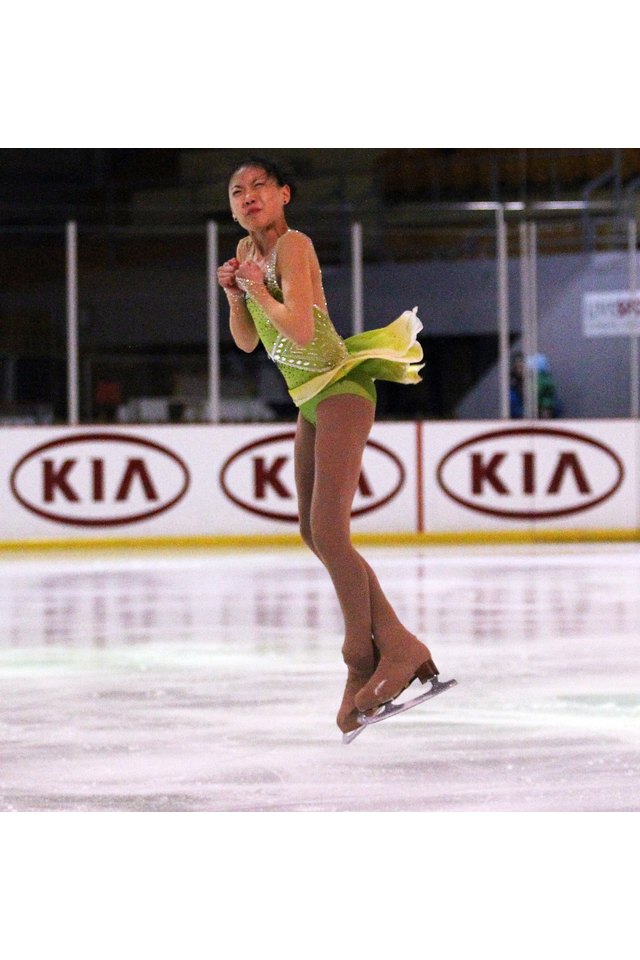Ice Skating Knee Injuries

Recreational ice skating is meant to be an enjoyable activity spent getting exercise as you move around the ice with friends or family members. Competitive figure skating and ice hockey come with far more risk. But even recreational skaters know that a fall on hard ice can hurt and knee injuries can result.
Bruises
Bruises are the most common injury for anyone who goes on the ice and skates. There is little give when you hit the ice, and your knees are often going to absorb the bulk of the abuse. Black and blue marks, swelling and bruising will often result when a skater falls to the ice. It might be somewhat uncomfortable and a bit painful, but it is not going to prevent skaters from getting out on the ice.
Sprain
Knee sprains are frequent injuries in figure skating and hockey. Figure skaters will perform spins, jumps and twists as they perform their routines and that means significant pressure is put on the knee. If you land properly after jumping, you won't get hurt. But any missed step will put pressure on your knee ligaments. That stretching will cause a painful strain or strain that will require medical attention and may force you to stay off the ice.
Ligament Damage
Every skating movement on the ice puts heavy pressure on your anterior cruciate ligament, medial collateral ligament and posterior cruciate ligament. When you play hockey, you are involved in a contact sport and your knees are often at risk if you skate hard into the boards or you get checked by an opponent. You can tear your ACL or MCL -- PCL injuries are far less common -- and those kind of injuries often require surgery that can keep you out of action for months. The amount of time you miss will depend on the severity of your tear and your ability to do rehab exercises.
Treatment
Skaters who suffer knee injuries have to use ice to reduce swelling immediately after the injury occurs. Significant injuries may require surgery. Trainers may offer ibuprofen to reduce pain. Knee pads and braces can reduce the risk of additional injury but may impact agility and mobility on the ice. Surgery for torn ligaments will require a significant rehab period before a skater or hockey player can return to the ice.
Writer Bio
Steve Silverman is an award-winning writer, covering sports since 1980. Silverman authored The Minnesota Vikings: The Good, The Bad and The Ugly and Who's Better, Who's Best in Football -- The Top 60 Players of All-Time, among others, and placed in the Pro Football Writers of America awards three times. Silverman holds a Master of Science in journalism from the Medill School of Journalism.
